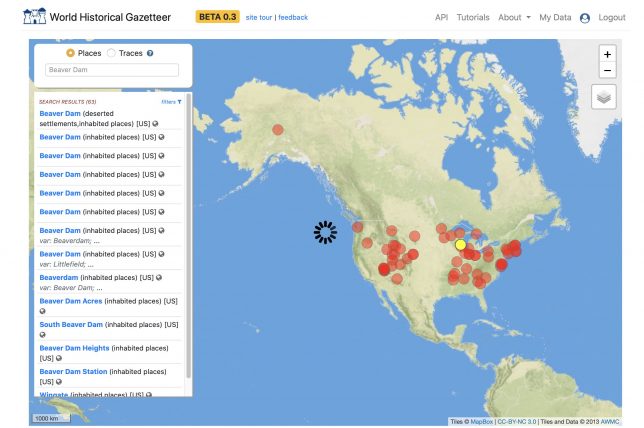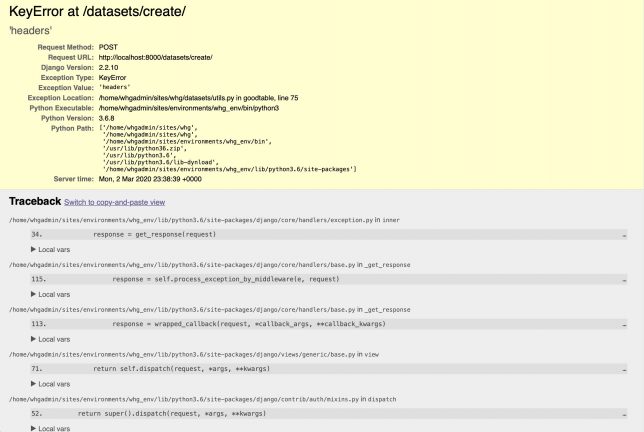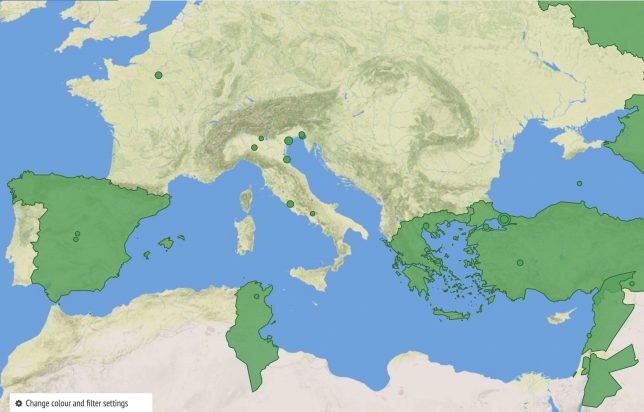1. WHG
a) I searched for a few different places in WHG and found the results to be pretty much what I expected, but there were a couple of interesting things which emerged for me. First, I searched for my home town, “Beaver Dam, WI” and no results were returned. When I searched for just “Beaver Dam,” 63 results emerged including 3 that relate to my town. All of the results were in the United States, including one in Alaska. It hadn’t been in the forefront of my mind that that would be the case, but of course that is true. It was also fun to see the density of dots correspond to places where one is likely to find beavers (or would have been likely to find beavers at one point in time).

I next searched more specifically for the rural township of approximately 1400 people where my family now lives, “Westford.” 8 results were returned, all in the Eastern United States and none corresponding to the town in Wisconsin.
I then switched gears and searched for “Rome” which returned 67 results with just 3 in Italy. I thought I would try to look more broadly for “Lazio” the region of Italy in which Rome resides, and the region did not appear. However, when I searched for “Tuscany,” another region, it does appear. It seemed an interesting discrepancy.
b) I wasn’t able to create a dataset to practice contributing data. Instead, I got an error message:

2. Recogito
b) I uploaded an article by Fabio Barry on marble floors in the early Modern Mediterranean. When I converted into text format, it was much longer than I expected, so I only annotated a few pages of it and found the process quite tedious. I also realized after I had gone through and annotated all place names in those pages, that I needed to be more selective when doing so because including countries actually just diffused the information.
In all, I found the mapping not particularly illuminating. It seemed to reveal an obvious premodern Mediterranean world and to present this world with a certain stasis that doesn’t really speak to the ideas of mobility and exchange of materials in the article. Perhaps, if I continued to annotate the document, it would begin to reveal interesting connections which don’t yet jump out!
